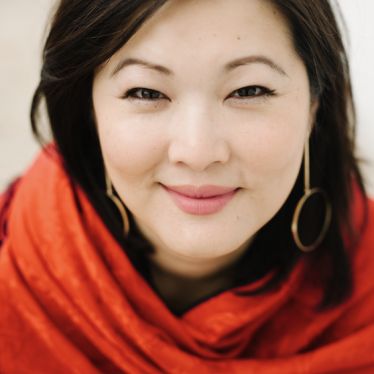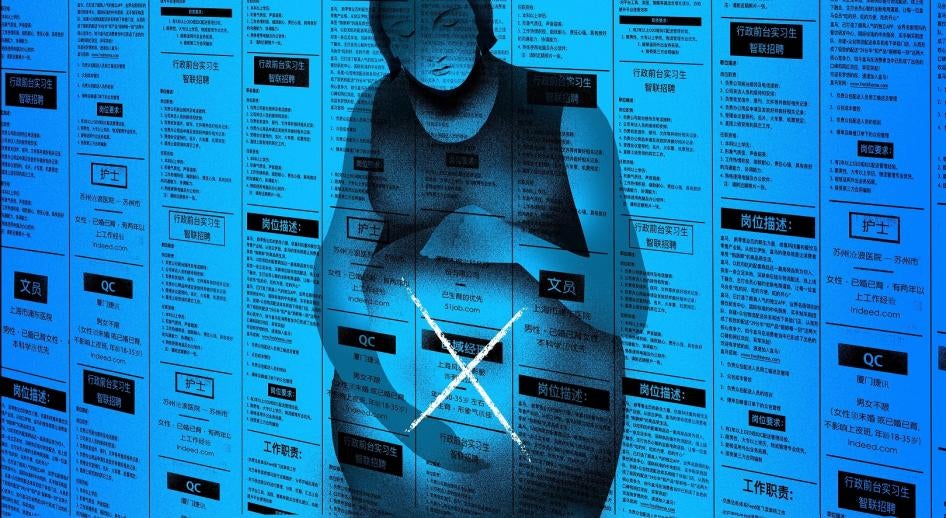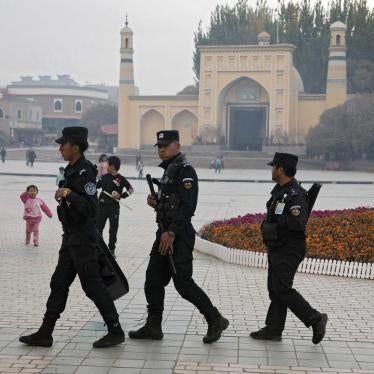We have been writing and warning for years about the Chinese government’s one-child policy and its disastrous long-term effects on the country’s population and society.
It feels like we have been documenting the melting of glaciers; a calamity, but a slow-moving one. For the past six years China moved swiftly from a one- to two- to three-child policy only to be met with plummeting birth rates. Every marker of demographic decline is a reminder of why regulating family size by force is a human rights disaster.
In January the Chinese government announced that last year the country only added 480,000 people and the birth rate dropped to 7.5 per 1,000 people, the lowest in decades. Meanwhile, the percentage of older people has steadily risen, with people aged 60 or above accounting for nearly one-fifth of the population. For the first time since the great famine of the Great Leap Forward in 1961, China’s population could contract this year, with fewer births than deaths, all of which is causing labor shortages, pension shortfalls, and a host of social problems.
How should the Communist Party address this crisis?
China isn’t the only country trying to raise sagging birth rates but it is by far the only country to have shed so much of its population without war or pestilence. It did so through the introduction of the one-child policy, a radical, long-running social experiment that was vicious, inhumane, violated everyone’s reproductive rights, and resulted in a wildly uneven distribution by sex. It has led to an estimated 30-million male surplus – roughly an Australia-size population of bachelors – and an age distribution within the population at odds with the country’s economic health. As a result, the Chinese Communist Party is now turning to women and exhorting – some say hounding – them to have more children.
In an astonishing about-face, the one-child policy has turned into a “have one more child” policy and then one more but so far women aren’t buying it. The 2016 introduction of the two-child policy did lead to an initial spike in birth rates but, since then, births have dropped every year. Many have cited the high cost of child-rearing as a disincentive, but women – the main focus, target, and victims of the country’s whipsawing population planning policies – have also revolted against these latest attempts to restrict their reproductive choices.
Jonathan Swift once wrote a satire on how the Irish famine could be solved by eating children. For the country that has figuratively devoured its young, here is our Swiftian proposal on how the Chinese Communist Party should start to solve its population problem: with a sincere, massive apology to China’s women.
Say sorry for blaming them for the country’s negative population growth. Say sorry for stigmatising unmarried women in their late 20s by calling them “leftover women.” Say sorry for violating their rights to make their own choices on marriage, work, and reproduction and, in general, not doing enough to take down patriarchal systems that put the burden for having more children and caregiving squarely on women’s shoulders.
In March, for example, the Jiangsu provincial authorities partly attributed their negative population growth – occurring for the first time since the founding of the People’s Republic in 1949 – to “the significant increase in women’s educational level.” The tone of the announcement – as if women’s education is to blame for China’s population problems – riled many. “So, no more foot-binding, but brain-binding now?” a netizen commented on social media platform Weibo.
While Chinese women are more educated than ever, workplace gender discrimination keeps holding them back from achieving their full potential. In China, differences in mandated parental leave – mothers can get up to six months of maternity leave, while paternity leave is at most 30 days – have encouraged discriminatory practices by employers and reinforced harmful gender norms. With China’s weak workplace protection laws, many companies are openly expressing a preference to hire men or women who’ve already had their children, as Human Rights Watch research shows.
Since the 2016 lifting of the one-child policy, numerous women have described being asked about their childbearing status during job interviews, being forced to sign contracts pledging not to get pregnant or being demoted or fired for being pregnant. A recent college graduate said all five companies that she interviewed with asked about her marriage and childbearing plans, and three of them told her that they would not offer her the job if she wanted to have a child. A mother of one child was asked to sign a contract promising that she would not have a second for at least three years as a condition for a job offer. A woman was fired days after she informed her employer that she was pregnant. The list goes on and on. While Chinese law bans such discriminatory practices, it provides few effective enforcement mechanisms, leaving victims with inadequate avenues for redress.
While the goal of the two- and three-child policy is to encourage, not discourage births, it’s still the same story as the one-child policy in the sense that women end up being punished for their fertility, one way or the other.
You might ask how could the CCP saying sorry help China’s population crisis?
Well, it might not do a lot to spur births. But the government’s long history of restricting women’s right to reproductive choice and bodily autonomy through abusive, and sometimes violent means has instilled a deep fear and suspicion among many women in China that genuine attempts at reparation – however unlikely this might be to happen – would help alleviate.
One cannot begin to build happy families in a miasma of fear, suspicion and rage.
Above all, the Chinese women are owed profound apologies for the extensive and inhumane acts committed against them during the one-child policy years, when the authorities subjected countless women to forced contraception, forced sterilization, and forced abortion, particularly in the 1980s and 1990s.
The steps needed to implement an apology
Genuine contrition doesn’t stop at words. The state should also urgently take practical steps to end gender inequality in all areas of society, including the workplace and home. In addition to meaningful measures to prevent employment discrimination, the government should end discriminatory parental leave policies, expand parental leave and protections for those who take it, ensure availability and affordability of childcare and other forms of professional caregiving, and provide equitable access to health care for pregnant women and their children. The stick has failed; this is what a carrot might look like.
Another easy solution to increase the birth rate is to allow people who are not traditionally parents to become parents, but this isn’t something the Chinese government has demonstrated a willingness to do. Children born outside of marriage still face fines and denial of access to public services, and same-sex unions are not recognized. Single women are denied access to egg freezing procedures and in vitro fertilization, with the justification that these technologies could “instill unrealistic hope in women who might mistakenly postpone childbearing plans.”
A quick recap: Shortly after the CCP took power in China in 1949, Chairman Mao Zedong encouraged population growth to create manpower. As a result, China’s population nearly doubled in 30 years. Then in 1979, to curb population growth and ease environmental and natural resource challenges, the Chinese government introduced the “one-child policy,” limiting most couples in the country to just one child. The policy was crafted by military scientists, men of course, who believed any regrettable side effects – see those listed above – could be swiftly mitigated, and women’s fertility rates easily adjusted. This resulted in horrors including no-birth periods, such as from May to August 1991 in Guan and Shen counties in Shandong province, where all pregnancies were forcibly aborted, during the “Childless Hundred Days” campaign.
For 30 years, parents across the country who resisted complying with the one-child policy were harassed, detained, and had their property confiscated or houses demolished. Authorities often levied enormous fines on families who violated the policy, forcing them into destitution. Children who were born outside of the one-child policy were denied legal documentation. As a result, until the hefty fine was paid, these children were unable to obtain an education, health care, or other forms of public services.
One of us, Yaqiu, was born as the third child of her family. Her mother hid in relatives’ homes, dodging government officers who tried to take her away for a forced abortion. But Yaqiu’s family was still impoverished by the huge fine imposed on her life. As her mother often joked to Yaqiu growing up, “We even had to sell the broom in order to afford you!”
The Chinese Communist Party also owes a fervent apology – and full reparations – to the women who have been trafficked to fill the female shortage caused by the one-child policy. Coupled with China’s traditional preference for boys, the one-child policy created an estimated 30 to 40 million “missing women” and fueled a demand for trafficked women and girls, spurring a business in selling humans in countries across Asia and within China.
One of the most pernicious examples of this is Xiahuimei, a mother of eight who had been found thinly clad and chained in a shed. Many in China were shocked to see such medieval conditions on the eve of the Beijing 2022 Winter Olympics, at a time when authorities could employ high-tech means to make snow, survey crowds and censor dissent. Authorities initially tried to cover up the issue, but in the face of public outrage, arrested several people, including her husband, for trafficking. Authorities said Xiahuimei had been bought and sold several times since 1998, but she is just one of many. Human Rights Watch has documented survivors who were sold for between US$3,000-13,000, repeatedly raped, and often forced to leave behind children fathered by their buyers, a source of great pain.
It is not only lower-income women who bear the brunt of the country’s reproductive policies.
In its bid to raise birth rates, the Chinese Communist Party has been placing curbs on divorces and abortions, narrowing women’s choices – another thing to say sorry about.
Since 2020, the Chinese Communist Party has been making divorce harder with a law establishing a mandatory “cooling-off period” of 30 days for couples who apply for divorce-through-agreement. Women’s rights activists warned that the law could disproportionately harm women, including endangering women experiencing domestic violence, as women initiate three-quarters of divorces. The forced “cooling off” appeared to have worked, as government statistics showed a steep drop in divorce filings in 2021. But some experts said the drop might also be due to pandemic restrictions that made scheduling divorce appointments more difficult.
The government is also stepping up efforts to reduce abortions. In September 2021, the State Council, China’s cabinet, in its “Chinese Women’s Development Guidelines” for 2021-2030, identified “reducing non-medically necessary abortions” as a step toward women’s development, one more example of its continued attacks on women’s reproductive rights. In April, the state-controlled newspaper People’s Consultative Conference said in an article, quoting expert opinion, that “parties responsible for unsuitable abortions” should be “severely punished.”
A disaster that could have been avoided
The sad truth is, there was no real justification for the one-child policy’s painful measures. The Chinese Communist Party sought to rationalize it as a crucial step to revitalize its economy and defuse a population time bomb. But a full decade before the one-child policy, China already had the “Later, Longer, Fewer” family planning policy that had halved family sizes successfully, using less coercive tactics. Many demographers believe China could have slowed population growth and turbocharged its economy without resorting to the one-child policy’s extreme methods. After all, in roughly the same period China’s one-child policy was in place, birthrates in South Korea, Taiwan, Singapore and Thailand also plunged. Now, these countries are also trying to raise birth rates. – But they don’t have to deal with problems on the scale of what China faces, with human trafficking, a demographic tsunami, and legions of lonely men and traumatized women. To have inflicted all this suffering unnecessarily is truly something to be sorry for.









